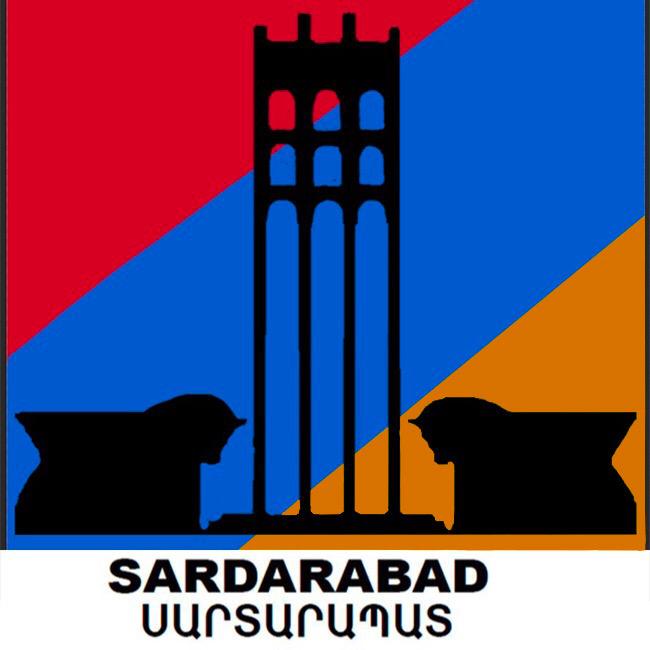It’s been 103 years since the heroic battles fought by Armenians to preserve our lands, our faith, our culture and traditions, but mainly so that the name of Armenia did not just remain in a few lines of history books.
Armenia and the Armenians had previously suffered the 1915 massacre; its divided, dismembered, impoverished and exhausted population fought a new battle for survival only 3 years after the great massacre and while other battles were still ongoing.
On May 26, but of the year 451, with the spiritual strength prompted by the Avarayr battle, said Armenian population joined for its freedom, its land, its honor and life, and faced the Turkish army’s power, way superior in number.
Avarayr was the uprising of the Armenian population against the Sasanian king Yazdegerd, who forced them to convert to Zoroastrianism. Back then, the Persian sought to invade the Armenian territory. However, they faced an untamable force, far less in number, though of great courage and unique drive. Led by General Vardan Mamikonian, Armenians were guided by their “sbarabed”, who would lead them to immortality.
Vardan and many other eminent and brave soldiers died in the battle, were crushed by the Persian power. However, in view of such a defense, in spite of having won the battle, the king was obliged to allow Armenians to worship as they wished.
The Avarayr battle is a national holiday in Armenia. Its anniversary is a celebration of the Armenian Apostolic Church, Vardan Mamikonian being one of its saints.
This inspiring force of the year 451 A.C., and after the withdrawal of the Russian troops from the Caucasus front in January 1918, again left Armenians to the faith of the Ottoman Empire. Determined not to repeat the recent past, they created a small Armenian army to occupy the positions abandoned by the Russian.
Thus, three fronts were formed: Gharakilise, Bash Aparan and Sardarabad. General Tovmas Nazarbekian was elected Commander in Chief, settled at the front of Gharakilise. Bash Aparan and Sardarabad fronts were entrusted to General Movses Silikian, who had appointed Drastamat Kanaian at Bash Aparan and Daniel Bek Pirumian at Sardarabad.
In May 1918, only two months after signing the Brest-Litovsk Peace Treaty, the third Ottoman Empire crossed to Eastern Armenian and attacked Alexandropol (currently Gyumri). The Ottoman army sought to annihilate Armenia and reach the oil wells of Baku through the Russian Transcaucasia. After the fall of Alexandropol, the Ottoman army entered the territory of old Yerevan. Instead of retiring, Armenians decided to resist and get ready for the next battle.
Katolicos Kevork V ordered that all churches’ bells rang out for six days to call everyone to defend. And so did peasants, poets, blacksmiths, clergymen, women and children; they formed military units, using carts drawn by oxen, buffalos and cows to close roads. They organized for carrying food, supplies and ammunitions to the volunteers.
On May 20, Ottoman forces went into action at Gharakilise (currently Vanadzor), Sardarabad, Tiflis (currently Tbilisi, capital of Georgia) and Yerevan. While Gharakilise was their main target, Tiflis and Yerevan were under pressure.
They entered Gharakilise without resistance on May 22. Another group of infantry and cavalry soldiers headed to Sardarabad, where Armenian forces managed to stop them, forcing them to withdraw from almost 15 to 20 kilometers heading west. However, the Ottoman command was capable of recovering from its losses and reorganize on the northwest bank of River Arax. But their repeated attempts to cross the river found strong Armenian resistance.
The Ottoman defeat in Sardarabad on May 26 was fundamental to allow the Tashnagtsutiun to declare the independence of the Democratic Republic of Armenia on May 28, 1918.
In 1965, when commemorating the fiftieth anniversary of the Armenian Genocide, the authorities of the then Armenian Soviet Socialist Republic decided to build a monument and park dedicated to the victory at the place of the battle.
Architect Rafael Israelian completed the work in 1968. The author designed the monumental work and reflected on a cold marble the freedom, force, unity and commitment of all the Armenians.
103 years passed… a lot happened in more than one century… Armenia declared its independence on September 21, 1991, becoming the Republic of Armenia, three presidents were elected democratically, the “velvet revolution” took place in 2019, the atrocity of a war was again suffered in 2020, and today, we feel distressed in Armenian territory …
We wonder, why?
We wonder, is the feeling enough?
We wonder what we can do?
We wonder about the legacy to our children?
We wonder how will we let others step on the holy ground?
Armenian poet Baruir Sevag (1924-1971) wrote the lyrics of the beautify song to which Edgar Hovhannesian put music, and one of its lines goes: “That future generations recognize themselves in Sardarabad”.
Let’s raise again one more time as if we were listening to Sardarabad’s bells ringing, let’s honor our martyrs, the old ones and the new ones, let’s not allow our enemy to freeze us, it’s the 21st Century!
Let’s hold our hands and walk together towards Armenia’s brilliant future.
Susana Dergarabetian Nahabetian

Translation Analía Guezikaraian